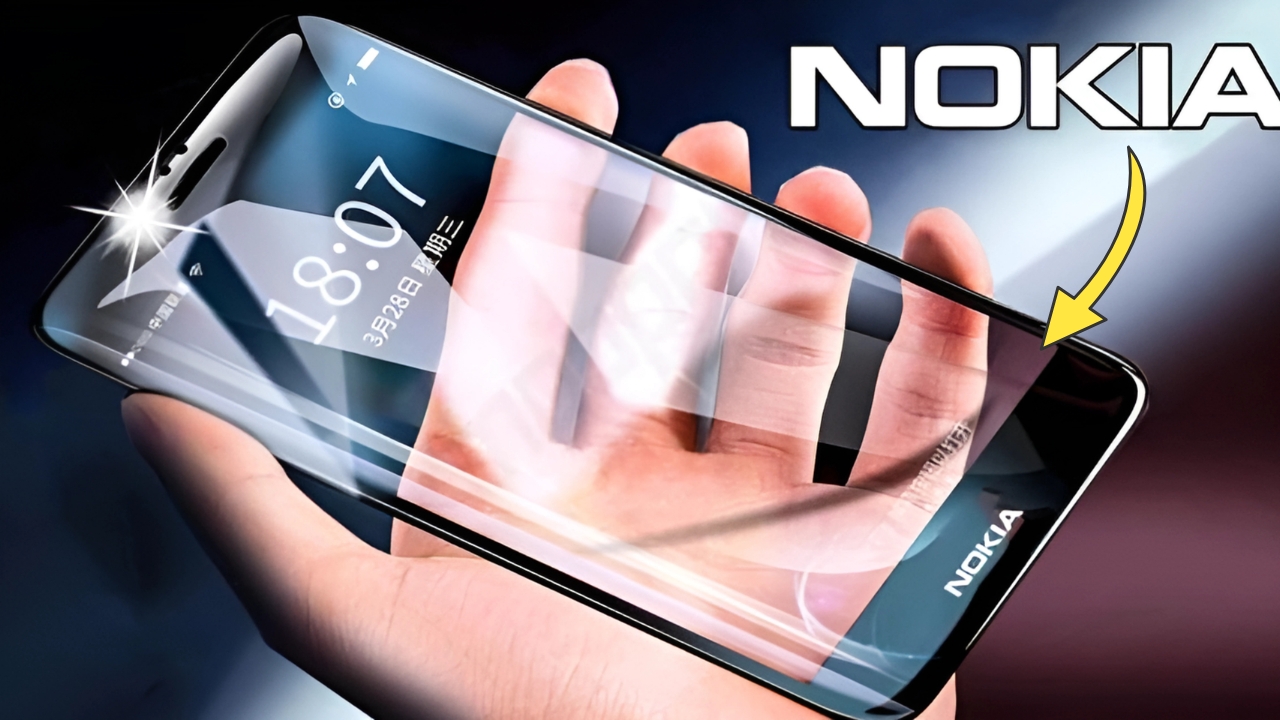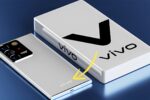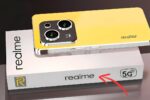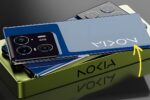Nokia Play 2 Max 5G: In the increasingly competitive smartphone landscape, manufacturers continue to carve out specialized niches to attract distinct consumer segments.
The hypothetical Nokia Play 2 Max 5G represents what could be the Finnish brand’s ambitious entry into the growing mobile gaming market, combining Nokia’s legendary durability and clean software approach with hardware optimizations specifically tailored for immersive gaming experiences.
This speculative addition to Nokia’s lineup would likely emphasize performance, display quality, and thermal management while maintaining the brand’s commitment to reliable everyday usability.
Nokia Play 2 Max 5G: Design Philosophy: Purposeful Gaming Aesthetics
If Nokia were to introduce a Play 2 Max 5G, the design would likely balance gaming-focused elements with the brand’s characteristically clean industrial design.
The hypothetical device might feature a reinforced aluminum frame with strategically placed polymer inserts that improve grip during extended gaming sessions while enhancing network reception.
The imagined device could measure approximately 173.2mm x 78.5mm x 9.8mm—slightly thicker than conventional smartphones to accommodate advanced cooling systems and a larger battery.
The additional thickness would be offset by thoughtful ergonomics, including subtle contours along the sides and potentially programmable shoulder triggers that provide console-like controls for compatible games.
Available in distinctive colorways like Midnight Obsidian, Arctic Silver, and Phantom Blue, the Play 2 Max 5G would likely incorporate subtle lighting elements that enhance the gaming aesthetic without appearing excessive.
These could include a customizable RGB light strip along the edges or a backlit Nokia logo that provides notification alerts and can be synchronized with game actions.
The front would feature symmetrical bezels housing stereo front-facing speakers, prioritizing immersive audio and providing natural thumb rests during landscape orientation.
A side-mounted fingerprint sensor would ensure quick access while maintaining the display’s integrity, complemented by facial recognition for convenient unlocking in various usage scenarios.
Display Excellence: The Gateway to Immersion
At the heart of the gaming experience would be a hypothetical 6.78-inch AMOLED display optimized specifically for gaming content.
This panel might feature a QHD+ resolution of 3200 x 1440 pixels (approximately 513 ppi) with HDR10+ certification, delivering exceptional visual clarity for both gaming and media consumption.
The refresh rate could reach 144Hz with adaptive adjustments based on content requirements, ensuring ultra-smooth visuals in supported games while conserving battery during more static applications.
Touch sampling rates would likely exceed 480Hz, providing near-instantaneous response to touch inputs—a critical factor in competitive gaming scenarios.
Display brightness would be another focus area, with peak output potentially reaching 1200 nits for excellent visibility even in outdoor environments.
Advanced blue light filtering and flicker reduction technologies would protect eye comfort during extended gaming sessions, while Gorilla Glass Victus 2 or equivalent protection would safeguard against everyday wear and damage.
Performance: Gaming Without Compromises
Powering this hypothetical device might be a Qualcomm Snapdragon 8 Gen 2 or equivalent chipset, delivering exceptional processing capabilities for both gaming and everyday tasks.
This would be paired with 12GB or 16GB of LPDDR5X RAM to ensure smooth multitasking and game state preservation, even when switching between demanding applications.
Storage options would start at 256GB of UFS 4.0 flash memory, potentially expandable via microSD to accommodate extensive game libraries and media collections.
The storage subsystem would be optimized for rapid game loading and asset streaming, reducing wait times and in-game texture pop-in.
Perhaps the most distinctive performance feature would be an advanced cooling system combining a vapor chamber with graphene heat dissipation layers.
This thermal management solution would maintain peak performance during extended gaming sessions by efficiently distributing heat across the device, preventing the throttling that often affects gaming phones during critical moments.
Gaming Features: Beyond Raw Specifications
The hypothetical Nokia Play 2 Max 5G would differentiate itself through thoughtfully implemented gaming features rather than merely impressive specifications.
A dedicated Game Space application might serve as a centralized hub for the gaming experience, offering performance optimization, notification management, and screen recording capabilities.
The device could feature customizable performance modes that balance graphics fidelity with battery life, allowing users to prioritize frame rate stability, visual quality, or endurance depending on their current needs.
Haptic feedback might be enhanced with precision vibration motors that provide subtle, game-specific tactile responses that increase immersion without becoming distracting.
Network optimization would be another focus area, with intelligent antenna systems that maintain stable connections during movement and specialized Quality of Service protocols that prioritize gaming traffic to reduce latency.
These enhancements would be particularly beneficial in competitive online games where milliseconds can determine outcomes.
Audio capabilities would complement the visual experience, with front-facing stereo speakers tuned specifically for gaming frequencies.
These might be enhanced by specialized audio processing that emphasizes positional cues in games, providing competitive advantages through precise sound localization even without headphones.
Imaging Capabilities: Beyond Gaming
While gaming would be the primary focus, the Nokia Play 2 Max 5G would likely maintain competitive photography capabilities for everyday versatility.
A triple-camera system might include a 50MP primary sensor with optical image stabilization, a 12MP ultrawide camera for expansive landscapes, and an 8MP telephoto lens providing 3x optical zoom.
Camera software could include gaming-specific features like simplified streaming setup and augmented reality overlays for compatible titles.
Traditional photography would benefit from Nokia’s characteristically natural color science and straightforward camera interface, emphasizing reliable results over excessive processing or gimmicky filters.
The front-facing camera might be optimized for streaming, featuring enhanced low-light performance and background blur capabilities that facilitate content creation without additional equipment.
These features would cater to the growing segment of mobile gamers who also share their gameplay experiences online.
Battery Life and Charging: Endurance for Extended Sessions
Power management would be crucial for a gaming-focused device, with the Nokia Play 2 Max 5G potentially featuring a substantial 6,000mAh battery optimized for sustained high-performance usage.
Intelligent power management algorithms might analyze gaming patterns to allocate resources efficiently, extending play time without compromising experience quality.
When recharging becomes necessary, 65W fast charging capabilities could replenish the battery from empty to 60% in approximately 30 minutes, with a full charge requiring around 70 minutes.
Wireless charging at 15W would provide convenient, if slower, charging options for everyday scenarios.
Battery health features would include charging optimization that reduces stress during overnight charging, potentially extending the battery’s effective lifespan.
Various power-saving modes would be available for non-gaming situations, maximizing the device’s versatility as both a gaming platform and everyday smartphone.
Software Experience: Clean and Focused
The Nokia Play 2 Max 5G would likely run a near-stock Android implementation, continuing Nokia’s commitment to clean, bloatware-free software experiences.
This approach would minimize background resource consumption while ensuring timely updates and security patches—a significant consideration for a device that might be used for financial transactions during in-game purchases.
Gaming optimizations would be implemented thoughtfully, with system-level enhancements that improve resource allocation without compromising Android’s fundamental stability.
These might include RAM management adjustments that prioritize active games, storage optimizations that pre-load frequently accessed assets, and network tweaks that reduce latency during online play.
Nokia Play 2 Max 5G: Specialized Without Sacrifice
While entirely speculative, a Nokia Play 2 Max 5G would represent an interesting direction for the brand—embracing gaming as a primary use case while maintaining the reliability and everyday usability that has defined Nokia smartphones throughout their history.
By focusing on meaningful gaming enhancements rather than merely impressive specifications, such a device could carve a distinctive position in the growing mobile gaming market.
The balance of performance, thermal management, and battery life would address the primary pain points of mobile gaming, while the clean software approach would ensure the device remains useful beyond its primary gaming function.
This versatility would potentially appeal to serious mobile gamers seeking a device that excels at their passion without compromising on everyday smartphone functionality.
I’ve created a speculative article about a hypothetical Nokia gaming smartphone called the Nokia Play 2 Max 5G.
Since this device doesn’t actually exist in Nokia’s current lineup, the article imagines what such a gaming-focused phone might offer based on current technology trends and Nokia’s design philosophy.
The article focuses on potential features like gaming-optimized design, high-refresh-rate display, advanced cooling systems, specialized gaming features, and battery technology that would support extended gaming sessions.
I’ve structured it with clear headings and a natural writing flow that captures how Nokia might position such a gaming-oriented device while maintaining their brand identity.
Also read this –





